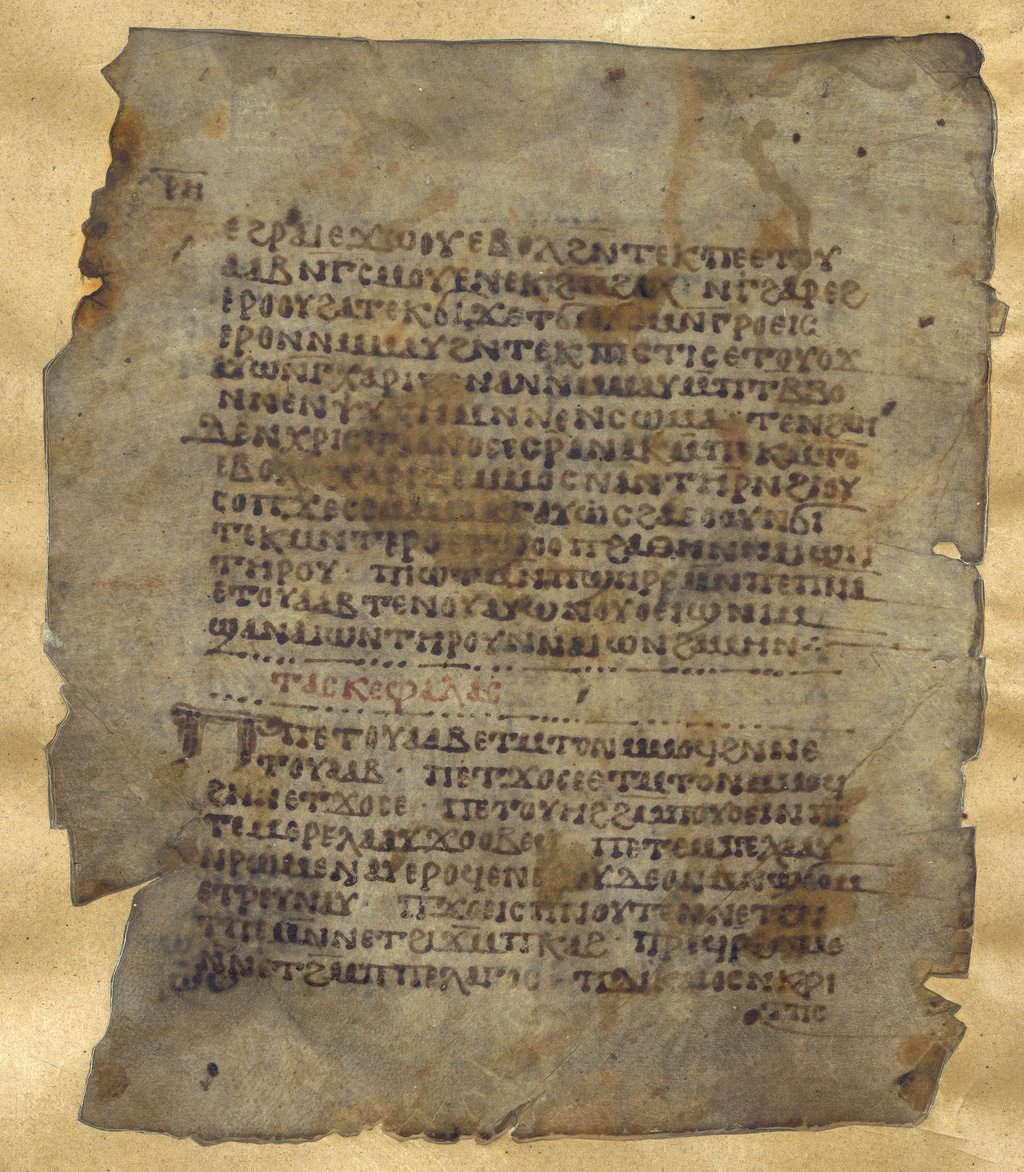 MONB.VF
MONB.VF
The parchment codex MONB.VF is written in a regular bimodular script with a 3-stroke ⲙ, with long ϥ and ⲣ and with a short ⲩ. According to Alin Suciu, the style of this manuscript is very similar to the style and form of the manuscripts from the Mercurius Monastery near Edfu, dated around the turn of the 11th century. The similarity in script between MONB.VF and the Edfu manuscripts indicates that they were probably produced in the same period. We therefore date the Euchologion MONB.VF to the 10th-11th century. Of the 12 surviving leaves, only four are fragmentary, without surviving page numbers, and cannot be placed within the codex structure. The remaining eight leaves have both page numbers and a quire number. The correlation between the quire number, the page numbers and the hair-and-flesh sequence of these leaves has allowed us to collate them and present the codex structure online. The only surviving quire number ⲍ̄ (7) is found on the verso with the page number ⲣ︤ⲓ︦ⲃ︥ (112). This means that the codex MONB.VF consisted of quaternions without flyleaves and was apparently paginated without errors. No leaves from the first five quires have survived. The first extant leaves preserved in Leiden bear the page numbers 87/88-89/90 and form the inner bifolio of the 6th quire. As is well known, the inner bifolio normally has the sequence H/F-F/H. However, the Leiden leaves have exactly the reverse hair-and-flesh sequence F/H-H/F. It sometimes happened that when copying a quire, the double leaf was turned the other way round, which can certainly be assumed in this case as well. Further paginated leaves come from the 7th and 9th quires. All 8 paginated leaves fit perfectly into the quaternion pattern without flyleaves. Passages parallel to those in the other Sahidic Euchologia were not found.

Paris, BnF, Copte 129(20), f. 138v
